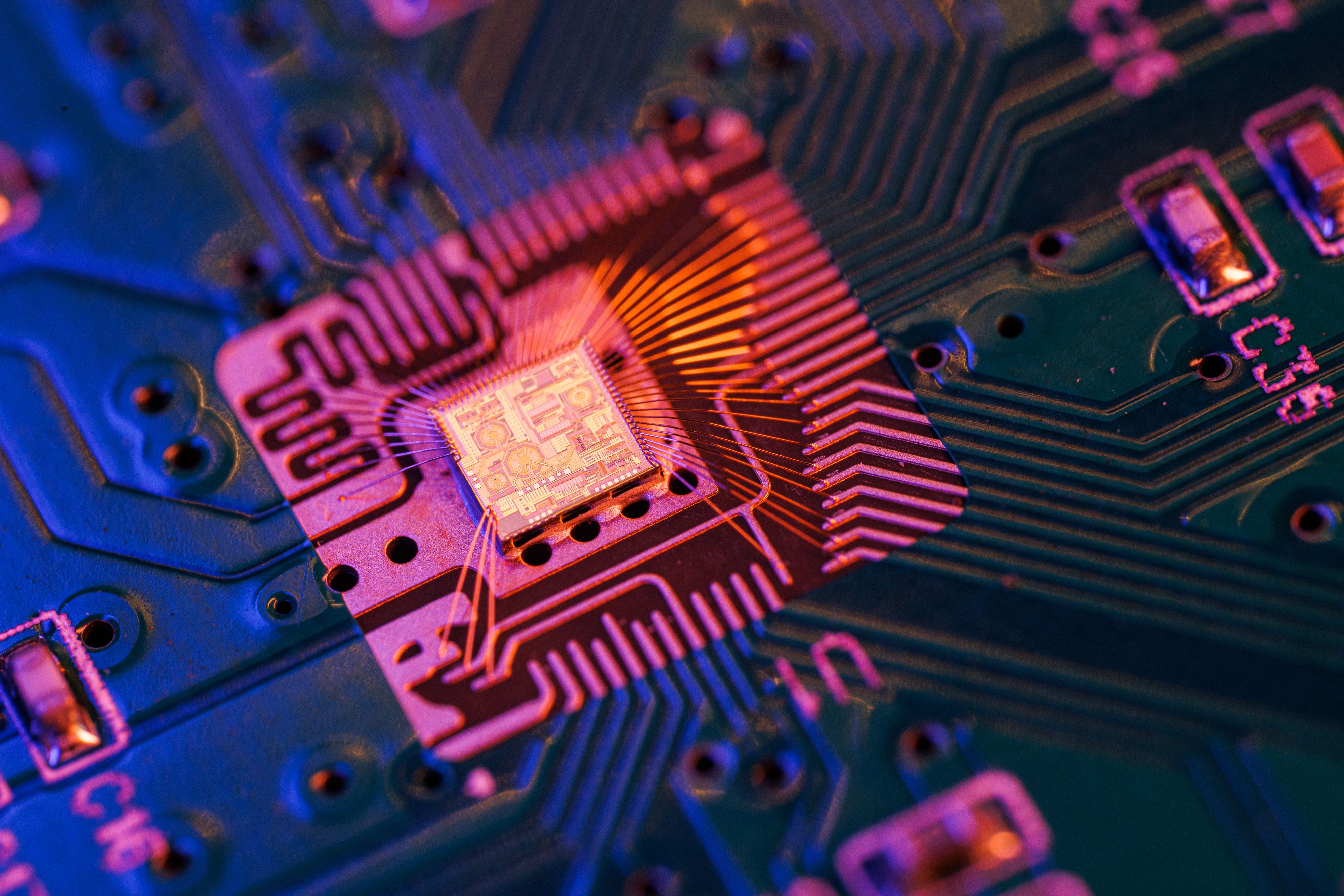Dean Nancy Allbritton explains what the CHIPS and Science Act means for the College of Engineering, the UW and the state of Washington. More>>
The CHIPS and Science Act of 2022 is helping UW ECE faculty researchers make groundbreaking and exciting new advancements in chip and semiconductor technologies. Read about the latest developments and related news stories below.
A camera that can identify objects at the speed of light
UW ECE and Physics Professor Arka Majumdar and his students have collaborated with Princeton University to build a new type of compact camera engineered for computer vision. Their prototype uses an optical computing chip, significantly reducing power consumption and enabling the camera to identify objects at light speed. More>>

Instead of using a traditional camera lens made out of glass or plastic, the optics in this camera relies on layers of 50 meta-lenses — flat, lightweight optical components that use microscopic nanostructures to manipulate light. These meta-lenses fit into a compact, optical computing chip (shown above), which was fabricated in the Washington Nanofabrication Laboratory by Majumdar and his students. Photo by Ilya Chugunov, courtesy of Princeton University
Designing next-generation chips at UW ECE
UW ECE faculty are leaders in microchip design and are known internationally for their creative, interdisciplinary approaches to chip design and development. More>>

Clockwise, from upper left: Microchips designed by UW ECE faculty members Sajjad Moazeni, Mo Li, Chris Rudell, and Hossein Naghavi. Photos by Ryan Hoover / UW ECE
A new, 3D-imaging system for early detection of lung cancer
UW ECE Assistant Professor Sajjad Moazeni and graduate students in his lab are part of a multidisciplinary, multi-institutional research team developing a new, three-dimensional imaging system for early detection of lung cancer. More>>
UW ECE Assistant Professor Sajjad Moazeni and graduate students in his lab are part of a multidisciplinary, multi-institutional research team developing a new, three-dimensional imaging system for early detection of lung cancer. Moazeni’s contribution to this work includes development of sophisticated silicon photonic microchips — integrated circuits that use both electrons and photons (light) to process information. Shown above, an example of a silicon photonic chip from Moazeni’s lab. Moazeni will be developing chips similar to this one for the imaging system. Photo by Ryan Hoover / UW ECE
The need for speed — Sajjad Moazeni receives NSF grant to develop a new kind of optical interconnect for data centers supporting AI and machine learning in the cloud
UW ECE Assistant Professor Sajjad Moazeni has received a grant from the National Science Foundation to develop an optical interconnect that will be fast, compact, and energy efficient. More>>

UW ECE Assistant Professor Sajjad Moazeni has received a three-year grant from the National Science Foundation to envision and develop a new kind of optical interconnect for data centers — one that will be compact, energy efficient, and speedy enough to support the next generation of AI, machine learning and other compute-intensive applications run in the cloud. Photo by Ryan Hoover / UW ECE
UPWARDS for the Future
The University of Washington is at the forefront of an international effort to innovate the semiconductor industry while building a skilled U.S.-based workforce to design and manufacture chip technology. UW ECE and Physics Professor Mo Li is leading the University’s contribution to this effort. More>>
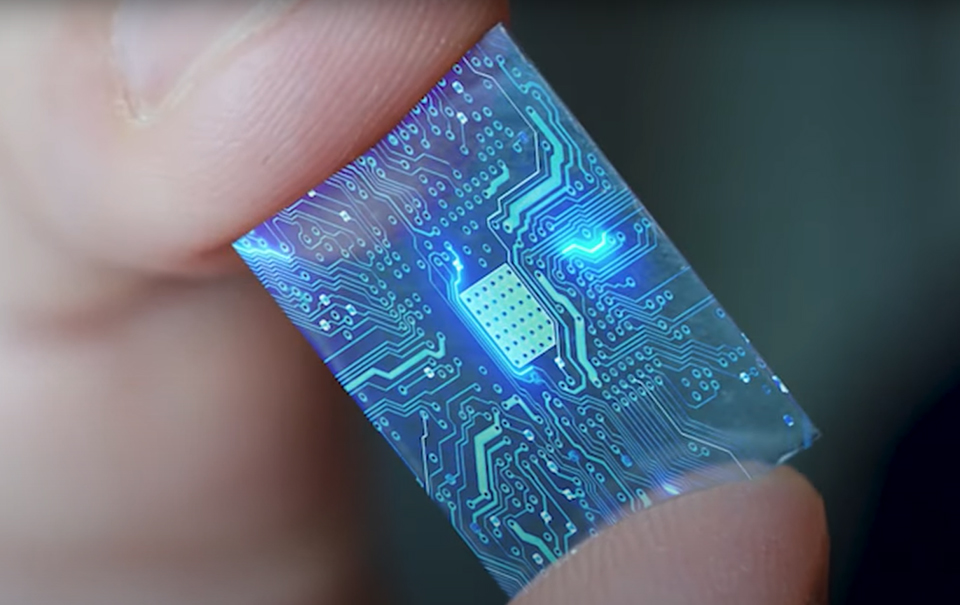
UPWARDS for the Future will support work already underway in the UW’s Washington Nanofabrication Facility. The photo above is from a video by Kiyomi Taguchi / UW News.
A laser printer for photonic chips
A research team led by UW ECE and Physics Professor Mo Li has invented a new way to print and reconfigure photonic integrated circuits (microchips) using a speedy, low-cost device about the size of a conventional desktop laser printer. More>>
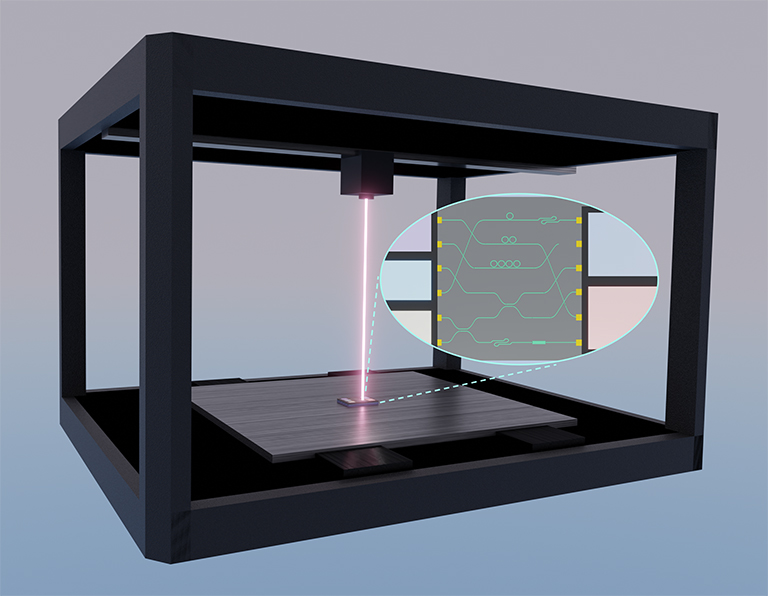
This device could enable students and researchers to bypass expensive nanofabrication facilities and produce photonic integrated circuits almost anywhere. The technology also has possible industrial applications. Illustration by Haoquin Deng / UW ECE.
A new kind of chip for wireless communication
A UW ECE research team led by Professor Chris Rudell has designed an innovative computer chip that can send and receive large amounts of data at high speeds while minimizing signal distortion and conserving the limited spectrum available for wireless communication. More>>
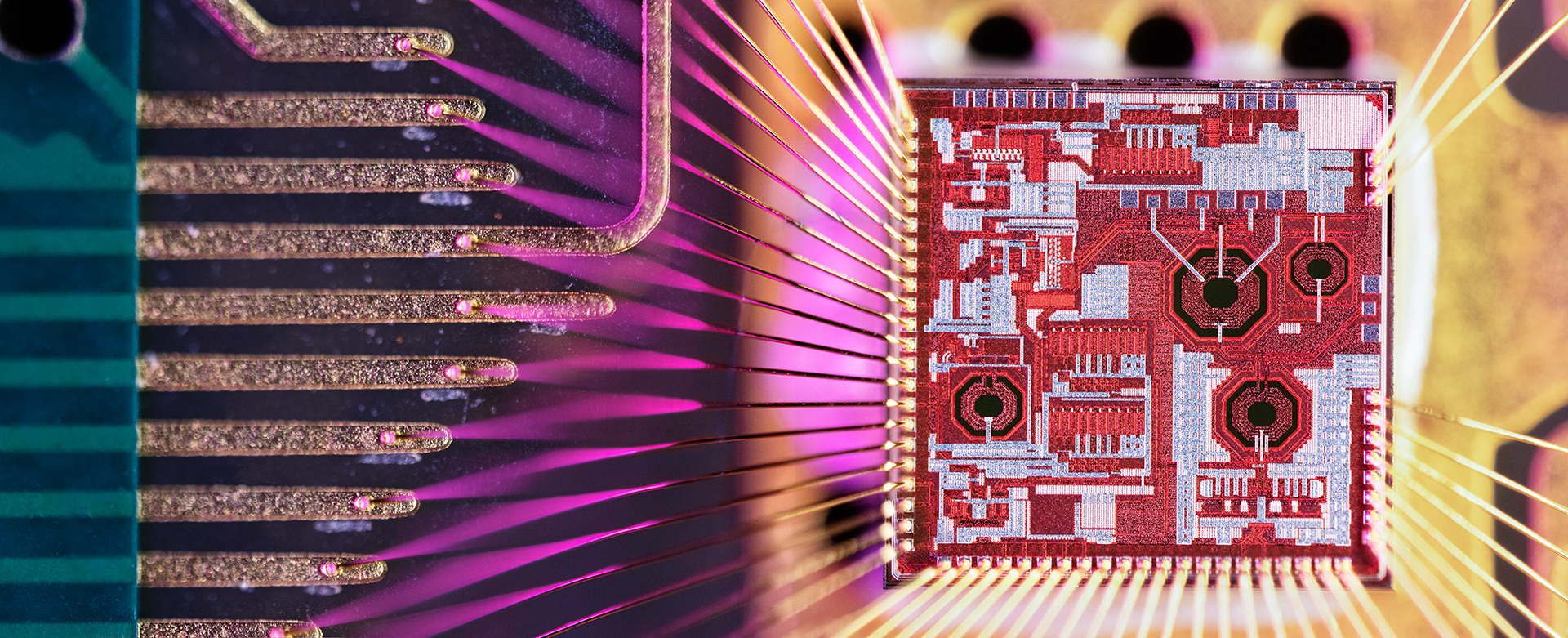
A UW ECE graduate student research team, advised and led by Professor Chris Rudell, has designed an innovative computer chip that can send and receive large amounts of data at high speeds while minimizing signal distortion and conserving the limited spectrum available for wireless communication. Shown above: A close-up view of the chip designed by the team. Photo by Ryan Hoover / UW ECE
Chips, science and engineering
A new kind of chip for quantum technology
A UW research team led by UW ECE and Physics Associate Professor Arka Majumdar has moved quantum technology development a significant step ahead, demonstrating a new kind of silicon photonic chip that could work as a solid foundation for building a quantum simulator, one with useful applications in the real world. More>>
A UW research team led by UW ECE and Physics Associate Professor Arka Majumdar has moved quantum technology development a significant step ahead, demonstrating a new kind of silicon photonic chip that could work as a solid foundation for building a quantum simulator, one with useful applications in the real world. Shown above: An optical image of the electrically controlled coupled cavity array in the team’s silicon photonic chip. The image depicts the wiring structure and optical micrograph of the coupled cavity array. This visual, provided by Abhi Saxena, is an edge detected output that uses an optical microscope image as an input.
How UW ECE is ready for the CHIPS and Science Act
The CHIPS and Science Act of 2022 is making historic investments in semiconductor research, workforce development and manufacturing. Learn how UW ECE is prepared and well-positioned to leverage these opportunities. More>>
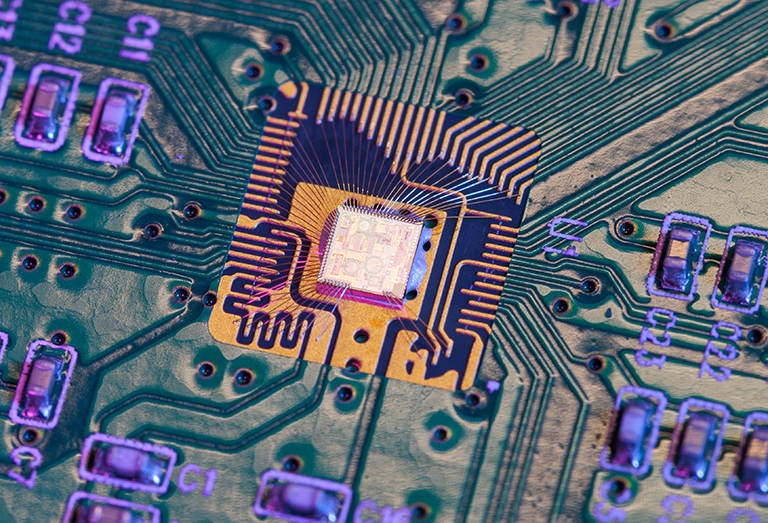
A recently designed microchip from the lab of UW ECE Professor Chris Rudell (in gold, mounted to the green circuit board shown above). This chip is a 2.4 GHz full-duplex transceiver, which employs multiple self-interference cancellation techniques to improve signal fidelity and efficiently use limited bandwidth. The chip has a broad range of applications, including use in satellite communications and radar, shipping, aviation and space industries, and 5G technologies. Photo by Ryan Hoover / UW ECE
Sajjad Moazeni receives Google Research Scholar Program award to develop faster computer networks for AI and machine learning in the cloud
UW ECE Assistant Professor Sajjad Moazeni is developing a new type of computer chip for use in data centers. This “smart” chip will help make AI and machine learning applications faster, more powerful and energy efficient. More>>
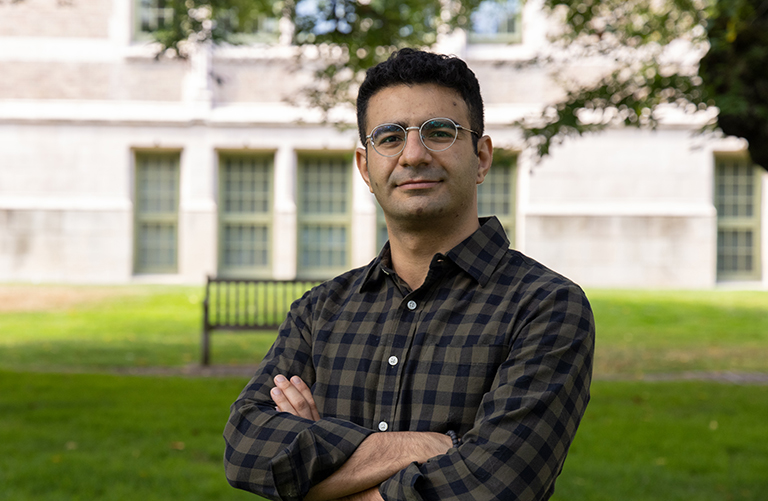
UW ECE Assistant Professor Sajjad Moazeni (shown above) is developing a new type of computer chip for use in data centers that support cloud computing. This “smart” chip will help to make AI and machine learning applications faster, more powerful and energy efficient. Photo by Ryan Hoover / UW ECE
New ‘eyes’ for self-driving cars
A UW ECE research team led by UW ECE and Physics Professor Mo Li has invented a new type of light detection and ranging, or LiDAR, technology that helps autonomous vehicles “see” distant objects. This on-chip device also has a wide range of other potential applications, including use in robotic systems found in agriculture, global supply chains, and medical imaging. More>>
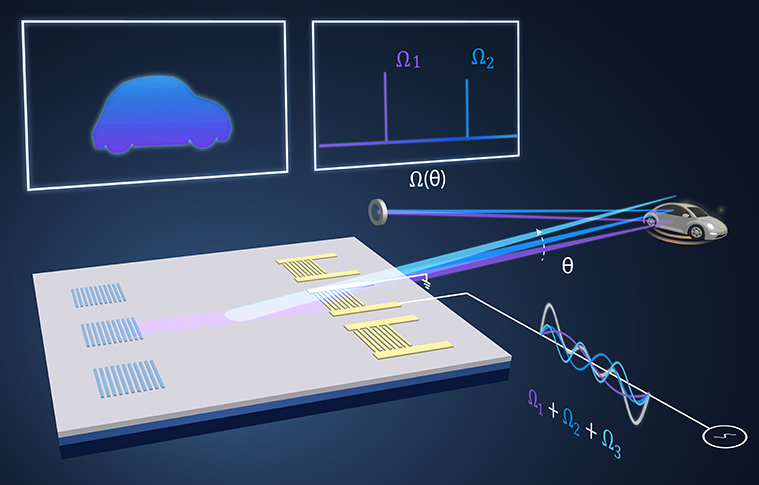
A UW ECE research team has invented a new type of light detection and ranging, or LiDAR, technology that helps robotic systems in autonomous vehicles discern distant objects with clarity and precision. This new form of LiDAR is integrated onto a computer chip. The chip uses sound waves running over its surface to steer a laser beam, much like a searchlight, so self-driving cars can “see” objects (such as pedestrians and other vehicles) that are far in the distance. Illustration is by Bingzhao Li and Qixuan Lin, courtesy of the Laboratory of Photonic Systems at the UW.


